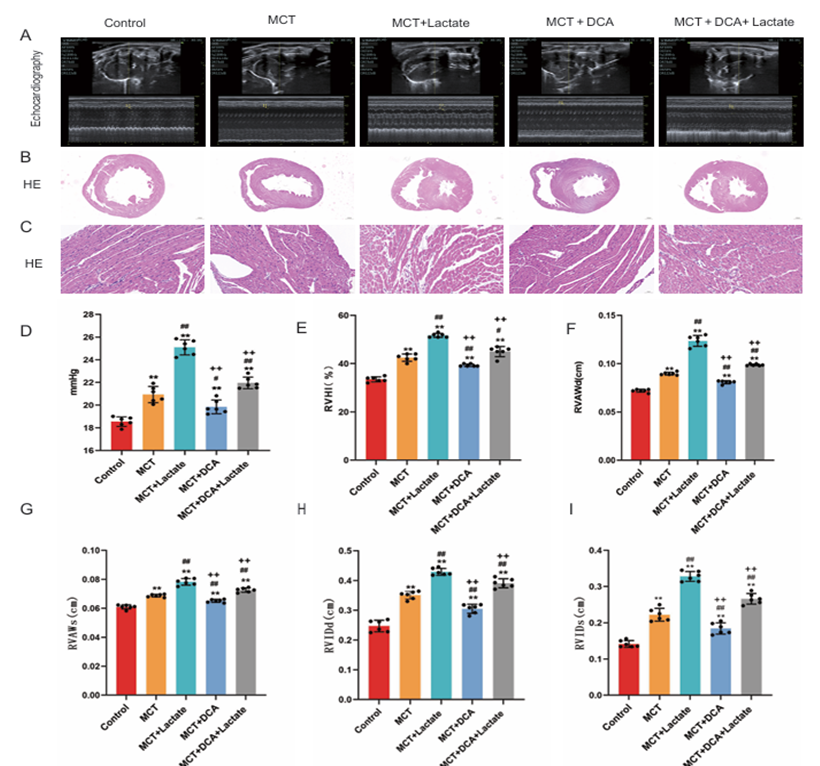Sodium Dichloroacetate Alleviates Pulmonary Arterial Hypertension by Affecting Glycolysis through the HIF-Α/ PDH-E1α Axis
##plugins.themes.bootstrap3.article.main##
Abstract
Background: Pulmonary arterial hypertension (PAH) is a progressive disease with limited therapeutic options. Based on the therapeutic effects of sodium dichloroacetate (DCA) on PAH, we aimed to explore the effects and potential mechanism of DCA in MCT-induced rat model of PAH. Methods: The rat model of PAH was established by a single subcutaneous injection of monocrotaline (MCT)(60 mg/kg). Tirty male Sprague Dawley rats at the age of 6 weeks (150 g to 160 g) were randomized for five groups. Control group (normal saline 100 mg/kg i.p. daily), MCT group (normal saline 100 mg/kg i.p. daily), MCT+lactate group (lactate 500 mg/kg i.p. weekly), MCT+DCA group (DCA100 mg/kg i.p. daily), MCT+DCA+lactate group (DCA 100 mg/kg i.p. daily+lactate 500 mg/kg i.p. weekly), were administered from the 7th day after MCT injection. After 28th day, hemodynamic parameters, histological changes of the pulmonary arterial vessels and right ventricle (RV), glycolysis and lactate metabolism, the expression of H3K18la/HistoneH3, HIF-α and PDH-E1α were assessed. Results: DCA attenuated MCT-induced PAH, with significant reductions in RV systolic pressure, pulmonary artery wall thickness and RV hypertrophy. DCA treatment alleviated significantly the glycolysis and lactate metabolism in MCT-induced PAH model rats. DCA treatment significantly reduced the expression of HIF-α, PDH-E1α, and the level of H3K18la/HistoneH3 in the MCT-induced PAH model rats. Conclusions: DCA alleviates MCT-induced PAH, potentially by inhibiting the HIF-α/PDH-E1α axis, which leads to reduced glycolysis and subsequent histone H3K18 lactylation (H3K18la).

